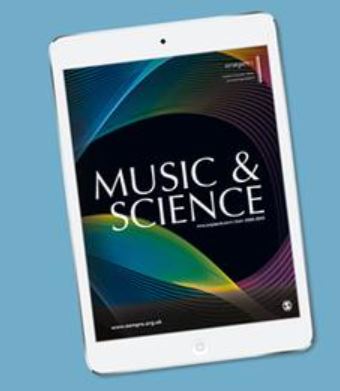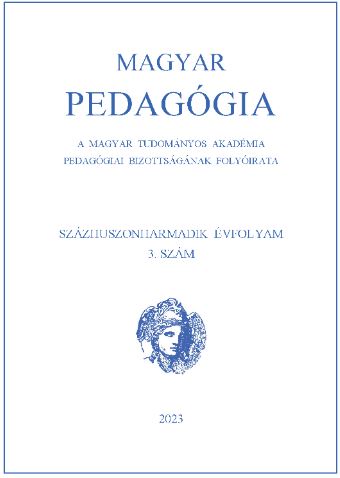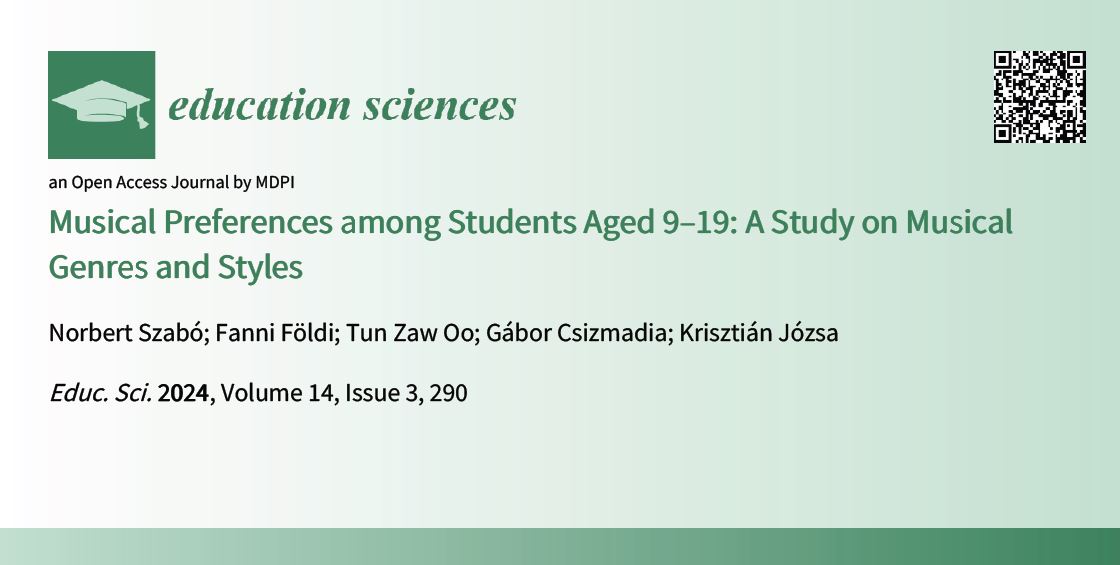Kategória: Publikáció
DOI:
Kulcsszavak:
éneklési képesség, keresztmetszeti vizsgálat, zenei nevelés, általános iskola, ének-zene tagozat
Absztrakt
A kutatás az éneklési képesség fejlődését vizsgálja ének-zene tagozatos, valamint normál tantervű, 6–13 éves tanulók körében. Az éneklési képesség vizsgálata egyéni tesztfelvétel formájában történt saját fejlesztésű mérőeszközzel. A mintát 160 ének-zene tagozatos és 476 nem ének-zene tagozatos, 1., 3., 5. és 7. évfolyamos tanuló alkotta. Az eredmények szerint az ének-zene tagozatos tanulóknak a normál tantervű oktatásban résztvevőkkel összehasonlítva valamennyi évfolyamon szignifikánsan fejlettebb az éneklési képessége. Az 1. és 3. évfolyam között mindkét oktatási formában szignifikáns mértékű a fejlődés. 3. és 5. évfolyam között nem mutatható ki további előrelépés, az 5. és 7. évfolyam között szignifikáns mértékű a visszafejlődés a nem ének-zene tagozatosok körében. Az ének-zene tagozaton megvalósuló több gyakorlási lehetőség az éneklési képesség általános fejlettsége terén nem eredményezi az éneklés gyorsabb ütemű, jelentősebb fejlődését. Azonban két fontos részkészség, a daléneklés és a hangminőség fejlődésére pozitív hatást gyakorol az ének-zene tagozatos képzés.
Igazi karácsonyi ajándékként jelent meg a Magyar Pedagógia decemberi számában legújabb cikkünk:
Kovács Katalin, Szabó Norbert, Józsa Krisztián, Janurik Márta
AZ ÉNEKLÉSI KÉPESSÉG KERESZTMETSZETI VIZSGÁLATAÁLTALÁNOS ISKOLÁS TANULÓK KÖRÉBEN
A teljes cikk itt letölthető.

Kedves Kollégáimmal – Földi Fanni, Oo, Tun Zaw, Csizmadia Gábor, Józsa, Krisztián – megjelent egy új kutatásunk publikációja:
Motivation in Learning Musical Instruments: The Role of Parents, Teachers, and Friends
címmel a Music & Science folyóiratban.

A legújabb publikációnk a Magyar Pedagógiában jelent meg.
Földi Fanni
Szegedi Tudományegyetem, ELTE BGGYK Atipikus Viselkedés és Kogníció Gyógypedagógiai Intézet, MTA-MATE Kora Gyermekkor Kutatócsoport
Szabó Norbert
Magyar Agrár- és Élettudományi Egyetem Neveléstudományi Intézet
Józsa Krisztián
Szegedi Tudományegyetem, Neveléstudományi Intézet
Tanulmányunkban a zenei preferencia és a zenei stílus fogalmát, a zenei műfajok kategorizálásának nehézségeit tárgyaljuk. Kutatásunkban konkrét zenei példákon vizsgáljuk a 7–19 éves tanulók véleményét az egyes műfajokról (N=1159). Mérőeszközünk saját fejlesztésű online kérdőív volt, amelyben négy zenei részletet helyeztünk el. A zenei videók típusai: utcazene, rockzene, klasszikus zene és népzene. A zenei részletekhez kapcsolódóan háttérkérdéseket tettünk fel, amelyek a hangszerbemutatón való részvételre, zenei műsorok nézésére irányultak. Az adatokat a tanulók életkora, a hangszeren tanuló és nem tanuló diákok összehasonlítása, a családi háttér alapján értelmezzük. A műfajok megítélésében szignifikáns különbség van a nemek, az életkori csoportok, a hangszeren játszó és nem játszó tanulók, továbbá a családi háttér alapján. A nemek közötti összehasonlításból látszik, hogy a lányok pozitívabb visszajelzést adtak az egyes zenei részletekkel kapcsolatban. Az életkori csoportok vizsgálata során a 15-16 éves tanulók megítélése a legalacsonyabb mind a négy zenei részletnél. A hangszeren tanuló és nem tanuló diákok hét csoportján egyértelműen kirajzolódik, hogy azok a tanulók, akik nem tanulnak és nem is szeretnének hangszeren tanulni, szignifikánsan kevésbé kedvelik a zenei részleteket. A szülők iskolai végzettsége alapján szignifikáns különbségek vannak a tanulók között. Vizsgálati eredményeink visszajelzés értékűek lehetnek az alapvetően népzenei- és klasszikus zenei iskolai törzsanyagra építő ének-zene és hangszeroktatás számára, hiszen a tanulók, korcsoporttól és nemtől függetlenül a populáris műfajokat (utcazene, rockzene) szignifikánsan jobban kedvelik, mint a klasszikus zenét vagy népzenét, amelyek megítélése egyébként nem tér el egymástól.
Egy újabb publikációnk jelent meg az Education Sciences folyóiratban Musical Preferences among Students Aged 9–19: A Study on Musical Genres and Styles címmel.
Szerzőtársaim: Földi Fanni, Tun Oo Zaw, Csizmadia Gábor és Józsa Krisztián.
This study aimed to explore students’ musical genre preferences, exploring variations across gender and age groups in Hungary. Additionally, we investigated the relationships among the popularity of musical genres and connections between musical programs and related activities. With the help of stratified sampling, we examined the opinions of students aged 9–19 about each genre (N = 1159) using specific musical examples. In this study, musical genres were classified into four main types based on related music videos, including classical popular music (CPM), rock music (RM), classical art music (CAM), and folk music (FM). Different types of analyses, such as t-tests, one-way and two-way ANOVAs, and correlational analyses such as correlation coefficients (r), chi-square tests, and eta squares, were employed in this study. The results showed that the popularity of the four pieces of music classified as CPM, RM, CAM, and FM had a moderately strong correlation with each other. The correlations between FM, CPM, and RM did not differ from each other, but they showed significantly weaker correlation values than the correlation between FM and CAM. Moreover, significant differences were found in the students’ perceptions of the genres based on their gender and age groups. Among the four performances, the girls had a greater preference compared to the boys for each one, except for the folk music piece. The youngest age group (9–12) showed the highest preference for the CPM, although the difference compared to the oldest age group (17–19) was not statistically significant. Therefore, this study is beneficial for music education, focusing on students’ genre preferences, including CPM, RM, CAM, and FM.

Musical Genre Preferences among School Students: The Role of the Family Background and Musical Instruments Learning
Kedves Szerzőtársaimmal, Földi Fanival, Tun Zaw Oo-val, Csizmadia Gáborral és Józsa Krisztiánnal készített publikációnk ma jelent meg a Music & Science folyóiratban.
The study presents the results of research that examines the popularity of videos representing four different musical styles among students aged 9–19 (N = 1159). The measuring instrument was a self-developed online questionnaire that explores students’ musical genre opinions based on four types of music videos: street music, rock music, classical music, and folk music. In relation to the musical pieces, we inquired about background aspects, with a specific focus on engagement in instrument presentations and the viewing of music programs. We analyze the data considering the context of learning a musical instrument and attitudes toward instrument training and family background. Findings show that the perception of genres varies significantly between students who play instruments and those who do not, as well as based on their family background. Among the seven groups of students, encompassing both instrument learners and non-learners, a distinct pattern emerges those who neither learn nor have a desire to learn an instrument exhibit notably lower fondness for musical compositions. Furthermore, significant differences are apparent among the students based on the educational level of their parents. The implication of this study lies in its revelation of how instrument training and parental education significantly shape students’ musical opinions, underscoring the need for targeted interventions to enhance music education experiences and enrich young individuals’ musical tastes.
A Music & Science folyóiratban megjelent az alábbi tanulmányunk:
Szabó Norbert; Földi Fanni; Oo, Tun Zaw; Csizmadia Gábor; Józsa Krisztián
Musical Genre Preferences among School Students: The Role of the Family Background and Musical Instruments Learning
A tanulmány itt letölthető.
Újabb tanulmányunk jelent meg az Education Science folyóiratban:
Szabó Norbert; Földi Fanni; Oo, Tun Zaw; Csizmadia Gábor; Józsa, Krisztián
Musical Preferences among Students Aged 9–19: A Study on Musical Genres and Styles
A teljes anyagot itt tudja letölteni.

The Dynamics of Mastery Motivation and Its Relationship with Self-Concept in Music Education
címmel jelent meg legfrissebb kutatásunk, amit itt tudsz elolvasni.
Szerzőtársaim:
Janurik Márta,Tun Zaw Oo, Kis Noémi és Józsa Kisztián




Legutóbbi hozzászólások